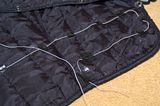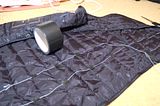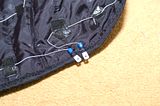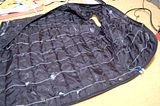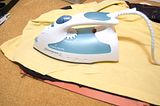All this talk about winter gloves has turned me on.

I posted this on the old forum pre-hack. Sadly its all now gone....
So, if you're skinned and want to build yourself an electric vest for a few bob, here's a recipe:
1- Source some teflon coated silver wire AWG 28 (0.7mm I believe) or thereabouts. I got mine from
http://www.fscables.com/.
2 - Find an old vest with or without sleeves. If you want to run wires into the sleeves you'll need more wire, which will mean more resistance = less heat. Remember that!
3 - Cut a length of wire of at least 2mtrs and test it with a spare bike battery. One end on the positive terminal, the other on the negative. Check how warm it gets but BE CAREFUL. If its too short it'll get REALLY hot! Lengthen the wire until you can find the right temperature for yourself. I cannot remember how long mine was because I did it such a long time ago, so you'll have to test it yourself. I also measured mine with an amp meter and it was drawing around 70 watts in the end. Not too bad.
4 - Lay out the wire on the vest and hold it in place with some bits of duct tape. Not joking! Make sure the wire is routed everywhere you want warmth and also ensure that both ends meet again in the same place so you can solder some terminals or a connector onto them. I suggest that you sew in the connectors so that they don't get ripped off easily. See pictures below.
5 - Once the wire is all laid out and you have the connections sorted, put plenty of duct tape over it. Then use an old t-shirt, all cut open to cover the wires. You don't want the wires directly on your skin or next to it! Use an iron to heat up the duct tape between the t-shirt and the best. This'll stick the 2 fabric together, fusing the wires in the middle. Don't worry, the teflon coating from the silver wire will prevent it the insulation from being molten.
6 - Make sure you've got a good connector on the jacket. Factor in that you might have to wash it, so a removable one is best. Also make sure the connector can take 70 watts +.
7 - Wire the vest into your bike with a separate relay and fuse. Use cables that can take that sort of amperage.
That's it! I built 3 of these and they work a treat without consuming too much power. Cost is minimal for the PTFE coated silver wires, a fuse holder, a 12V relay and some wire.
